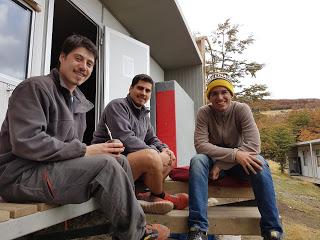
Una actividad típica de la Patagonia es la mateada: tomar mate. Ya hace tiempo que habíamos visto a Messi o Suárez poniendo en sus redes sociales fotos tomando mate, muchas veces cuando nos encontramos con argentinos, por ejemplo, los vemos con un termo a cuestas, un vaso raro y una pajita de metal.
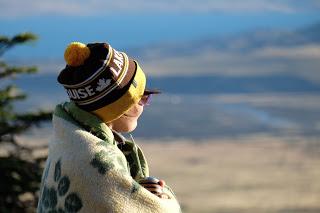
Y por no preguntar o simplemente por no investigar un poco desarrollábamos teorías bien peregrinas: ¿Será el mate una especie de droga? ¿No darán positivo en el control antidopaje? ¿Es como la marihuana? ¿Lo toma alguien que no sea de Argentina? ¿Por qué lo toman con pajita? ¿Por qué van siempre con el termo? ¿Es adictivo? ¿Es un tipo de té? ¿A qué sabe?
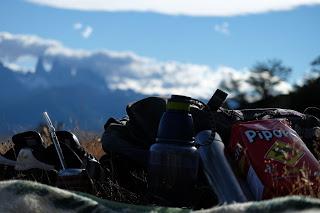
Aquí, en el corazón de la Patagonia chilena, hemos encontrado las respuestas. Más o menos cada día alrededor de las 12:30 del mediodía nos juntamos unos cuantos del campamento AWASI, generalmente Manuel, Pepe y yo, pero también Anita, Matías, Cristian, Marcelo, Diego, Tomás... para la mateada.El Mate y la Yerba Mate:Mate es una palabra que deriva del Quechua “Mati”, que significa calabaza. Así que el mate es la calabaza que hace las veces de recipiente del que se bebe la infusión de yerba mate (ilex paraguariensis), que es un árbol nativo de la Selva Paranaense.Las propiedades de la yerba mate:La infusión de yerba mate es un potente antioxidante (seis veces más potente que el té verde), contiene vitaminas del tipo B y tiene un gran contenido de potasio y magnesio. A su vez contiene cafeína y teína, esto es bueno o malo, según la persona, igual que su gran efecto diurético y laxante. Así que es como el BIO de Danone, te renueva por dentro y eso se nota por fuera.
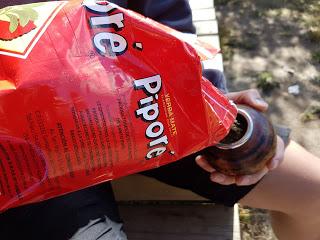
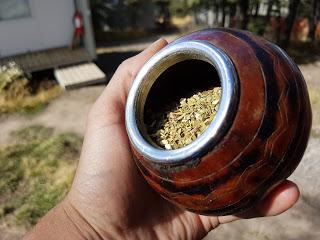
Como curiosidad de estas de revistas de peluquería vamos a destacar el efecto diurético del mate. La dieta de los habitantes de las zonas rurales del cono sur (gauchos) hasta los inicios del siglo XX era extremadamente hiperproteica. Sólo comían carne, ya fuese de caza o de ganado. Esto debería generar, por ejemplo, una gran concentración de urea en el organismo, haciendo que las personas desarrollasen enfermedades imposibilitantes como la gota. Y aquí viene el truco: la diuresis que se generaba debido a la elevadísima ingesta de mate contrapesaba los posibles efectos adversos de la dieta Dukan.
Un poco de historia:En la América precolombina los nativos guaraníes utilizaban las hojas de la yerba mate como moneda de cambio en trueques, objeto de culto y, obviamente, para infusiones. Para los guaraníes el árbol de la yerba mate era un regalo de los dioses, el árbol por excelencia. Los conquistadores españoles aprendieron de los guaraníes los usos y virtudes de la yerba mate, haciendo que su uso se extendiera a todo el Virreinato del Río de la Plata. Posteriormente fueron los Jesuitas los que desarrollaron el cultivo “industrial” del árbol de la yerba mate en las denominadas “reducciones”, dando a conocer la yerba mate al gran público. Actualmente, según los datos obtenidos por el Instituto Nacional de Yerba Mate de Argentina, cada argentino consume 6,24 kg de yerba mate al año.La mateada tradicional:El mate es algo para compartir y conversar. Lo primero que hay que hacer es obtener un mate que hay que curar. Este proceso cada uno lo hace un poco diferente pero en general dura unos cinco días y consiste en llenar el mate con yerba ya lavada, es decir, yerba mate que ya se ha infusionado. Se llena el mate completamente de yerba usada y se deja 24 horas. Este proceso se repite tantas veces como sea necesario hasta que la calabaza deja de oler a calabaza y huele a yerba. Ya tenemos un mate útil para matear.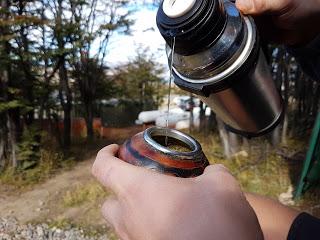
El cebador es la persona más importante de la mateada. Se encarga de preparar el mate y cebarlo (ir añadiéndole agua). El mate se inclina 45 grados y se llena de yerba hasta el borde. Una vez hecho esto hay que mojar la yerba desde la base por lo que se va vertiendo agua del termo prácticamente rozando el borde del mate opuesto al que hemos utilizado como referencia para llenarlo de yerba.
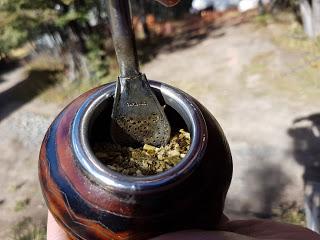
Una vez la yerba mate se va humedeciendo y absorbiendo agua se empieza a hinchar y aumentar de volumen, llenando más el mate. Cuando la yerba ya está suficientemente húmeda se hinca la bombilla metálica, que hará de filtro, de tal modo que atraviese la yerba hasta la base del mate.
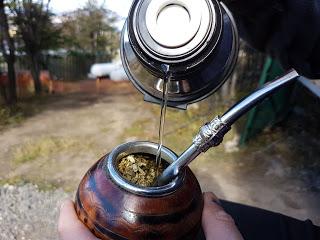
Una vez está la bombilla lista se añade más yerba mate haciendo una pequeña montañita. El cebador entonces procede a cebar el mate, añadir el agua caliente, lentamente utilizando la bombilla como guía, intentando que el agua no toque la yerba de la parte superior del montículo.
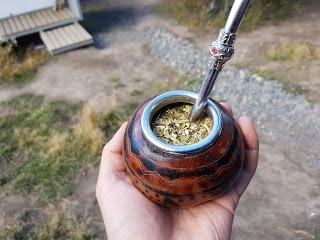
Es entonces cuando el cebador se toma el primer mate para asegurarse de que está bien preparado, de que la temperatura del agua es la adecuada y, en definitiva, de que está bueno.La liturgia de la mateada:Una vez el cebador se ha tomado el primer mate vuelve a llenar la calabaza de agua y le ofrece el mate a otra persona, siempre con la bombilla apuntando hacia el receptor. Si la persona no quiere matear debe responder “gracias” y no agarrar el mate. Si la persona sí que quiere matear simplemente debe agarrar el mate y disfrutarlo, estando completamente prohibido tocar la bombilla con las manos o reacomodarla; eso es tarea exclusiva del cebador. Una vez bebido el mate hay que devolvérselo al cebador con la bombilla hacia él, diciendo “rico mate” si quiere seguir en la rueda de la mateada o “gracias” si ya no se querrá tomar más.El lenguaje mudo del mate:El cebador puede enviar mensajes a sus huéspedes de la mateada según cómo prepare el mate. Así pues, cebar el mate con agua que ha llegado a hervir es considerado ofensivo ya que el invitado se va a quemar. De la misma forma uno puede dar la bienvenida a alguien a su casa, pero si no le ofrece un mate, esta persona sabe automáticamente que, en realidad, no es bien recibida.Saltarse a alguien en la rueda de la mateada se llama “puentear”; en este caso la persona puenteada ha sido ninguneada y despreciada totalmente: castigada a una vuelta.Cuando el cebador entrega el mate con la bombilla apuntando hacia él, en lugar de hacia el invitado, es un gesto ostensible de rechazo “con la bombilla hacia atrás, para que no volvás” que dicen los gauchos.Cuando el cebador entrega un mate llorón o chorreado (cuando se le ha salido el agua por arriba) se considera que el cebador tiene prisa por que el invitado se marche.
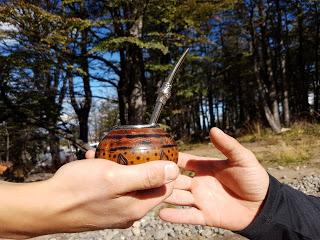
Enrique & Marina
English versionEL MATE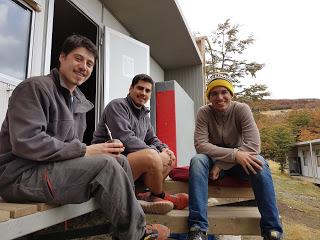
A very typical activity to do in Patagonia is matear: drinking mate. You may have seen Messi or Suárez on their social media drinking mate. And if you live in places where there’s a community of Argentinians, you’ve definitively seen them walking around with a thermos, a strange looking glass and a metal straw.
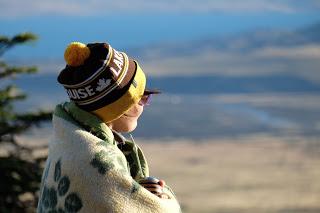
In Barcelona we never dared to ask and used to make ourselves questions about that drink. Is that mate a drug? Would that cause a positive in a performance enhancing drug test? Is it like marihuana? Are only Argentinians allowed to have it? Why do they need a straw? And why do they all suck the same straw? What’s the thermos for? Is it addictive? Does it taste good?
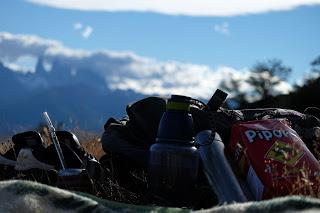
Even though to get the answer was as simple as asking them we had to move down to the Chilean Patagonia to find out. More or less every single day at 12.30 PM Enrique joins a few mates from the Awasi camp for their daily mateada. It’s usually Pepe, Manu and him although some others may come and would be welcome.The mate and the Yerba Mate:
The word Mate comes from the Quechua term “Mati” which stands for pumpkin. Then, mate actually stands for the vessel used to drink the infusion made with the herb called yerba mate (ilex paraguariensis). This herb has nothing to do with tea (camellia sinensis) and it’s a three native from the Alto Paraná Atlantic forest. The properties of Yerba Mate:
The infusion turns out to be a strong antioxidant (six more times than green tea), contains B type vitamins and a high amount of potassium and magnesium. Furthermore, the drink has caffeine and theine which is good or bad depending on what you’re looking for and your own metabolism. Likewise will be the diuretic and laxative effect.

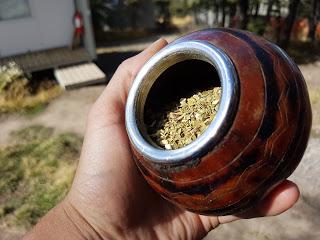
The diuretic effect was particularly desired in this context and that’s probably one of the reasons why the use of mate is so extended in Patagonia. The gauchos, inhabitants of this land at the beginning of the XXth century, followed a highly proteinic diet. In short, they mostly had meat from hunting or eating their livestock since that’s the (only) kind of food available (not even apples or silverbeet grow here). That should have led them to have a high concentration of urea in their body and develop disabling deseases such as gout. Therefore, the diuretic effect of the vast amount of mate drank throughout the day overdid the negative effect of the unbalanced “asado diet” of these gauchos.
A short history of Mate:Before the Spanish got to America, the natives used yerba mate leaves as an exchange coin, they worshiped them and, of course, made infusions. For the Guaraní people, the bush of yerba mate was a gift from the Gods and the Spanish conquistadores learnt from them its uses and properties and extended its consumption throughout the Viceroyalty of Río de la Plata. Later on, the Jesuit community started farming the product at a larger scale and extended its popularity to the mass. Currently, according to the National Institute of Yerba Mate of Argentina, every person in Argentina uses up 6,24 kg of yerba per year. The traditional mateada:Mate is something to share, it has to be social. First, you have to get a mate (the weird vessel) which needs to be cured. This process can be done in different ways but it basically consists in filling the mate up with washed yerba, that is wet yerba mate that has already been infused. The mate needs to hold the used yerba for 24 hours and you should change the wet leaves a few times until the pumpkin doesn’t smell leathery but smells like mate. This takes about five times but it’s better not to rush.
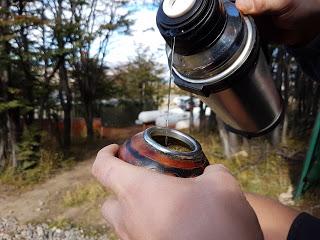
The cebador is the most important person in any mateada. He or she is the person who will prepare the mate and will be adding the water. The action of adding this water is called cebar. The mate needs to be turned 45 degrees (like a champagne flute) and it’s filled with the herb up to the lower edge. Then, the leaves need to be washed from the bottom to the top. For that, the cebador pours warm water from the other edge, the opposite used before as a reference to fill the mate with yerba

Once all the leaves are wet, they start absorbing water and increase in volume taking up the space left in the mate. When the yerba is wet enough, then you insert the metal straw or bombilla to the bottom of the pumpkin. This element is the filter so we don’t eat pieces of leaves when sipping the tea.
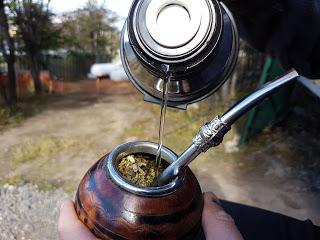
After the straw is in, we add more yerba mate forming a little pile. Now, the cebador proceeds to add hot water, slowly and using the straw as a guide. The point is not to pour any water over the leaves as this would make a hole and destroy the little pile of yerba we just added.
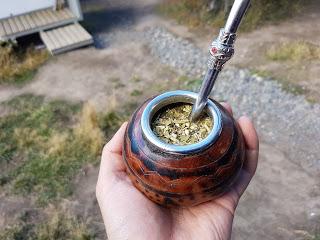
After this long process, the cebador takes the first sip to make sure that the preparation went well, the temperature of the water is right and that, basically, it tastes good. The ritual of a mateada:The cebador drinks all the water he can sip from the pumpkin. Then he fills the mate with more water again (pouring the water in the same way as before) and offers the mate to the person who the straw is pointing to. If that person doesn’t want to drink, he or she has to say “thanks” and not to take the mate. Alternatively, to accept the mate we only have to take the mate and drink it. However, do not ever touch the straw as the cebador is the only person allowed to do so. Moving or arranging the straw’s position is considered a big offence as it means that the mate isn’t tasting great and the preparation went wrong. Once you’re done sipping all your mate, you should give the vessel back to the cebador. The straw will be now pointing him (or her). Say “rico mate” (which translates for “nice mate”) if you want to have mate again or “gracias” (thank you, cheers) if you’re done drinking for today. The cebador will be adding hot water and offering the cup to all the guests in order and the mate will be passing from the guests’ hands to the cebador’s over and over. After it goes around the cebador will also have a mate and then the circle will start again. The secret language of mate:The cebador kind of acts as the host and he can send messages to his or her guests. For example, it is offensive when the cebador prepares mate with water that got to the boiling point because the guests will burn their tongues. Also, if you visit some people and they welcome you but don’t offer to make mate, it really means that you’re actually not welcome to their place. Also, when the cebador skips someone and doesn’t offer mate in one round it’s called “puentear”. That means the cebador is looking down on that person for whatever reason. Besides, if the cebador is offering the cup with the bombilla pointing towards himself, also means rejection. The gauchos have a said that is “con la bombilla hacia atrás, para que no volvás” which translates for “the straw backwards, so you don’t come back”. It can also happen that the mate is overflowing. They call it a crying mate (because it’s wet and drips). If you’re given one of those, that means your host is anxious for you to leave, so you better hurry and say bye.
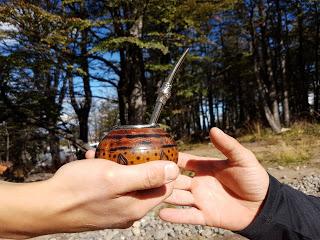
And the last one. The last mate you drink it’s called “mate del estribo” which literally translates for the mate of the stirrup. That expression comes from the old days when all the gauchos moved by horse and they had their last sip of mate pretty much on their a saddles and with their feet on the stirrup. Enrique & Marina
